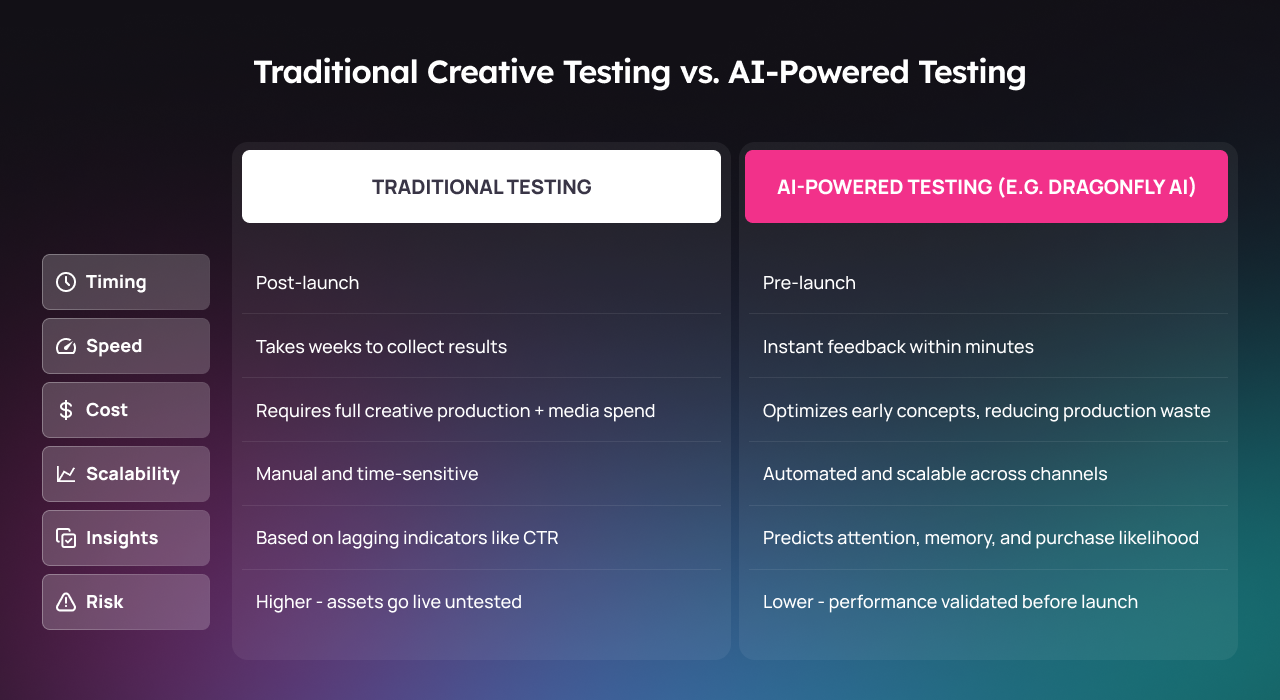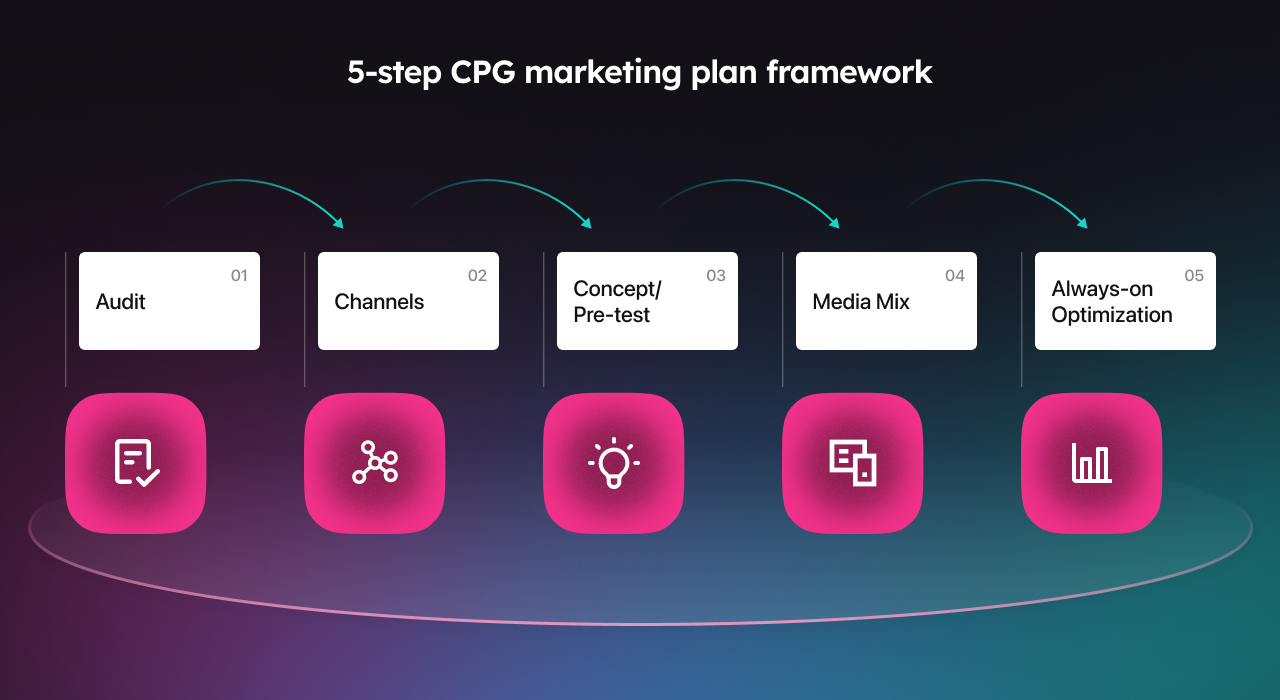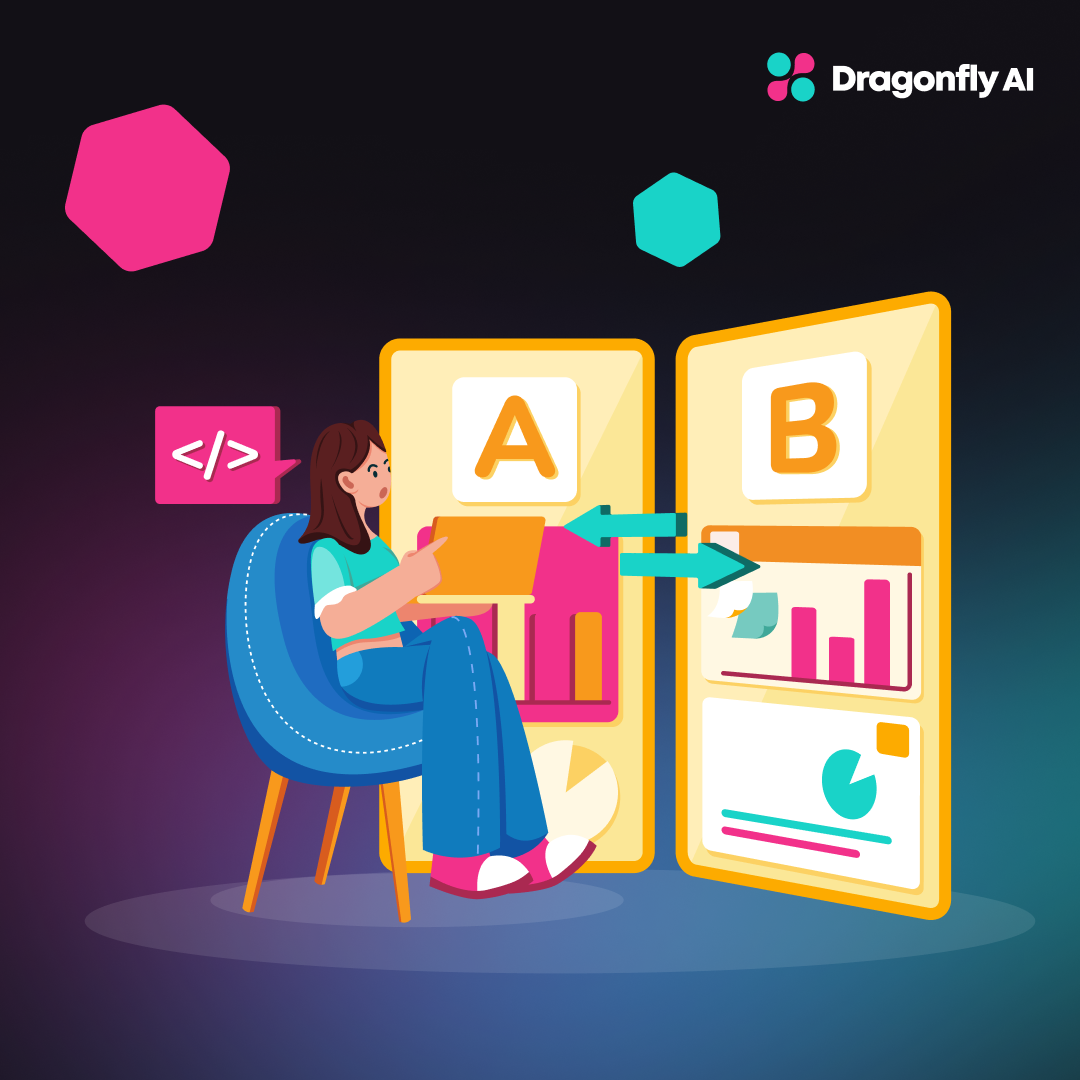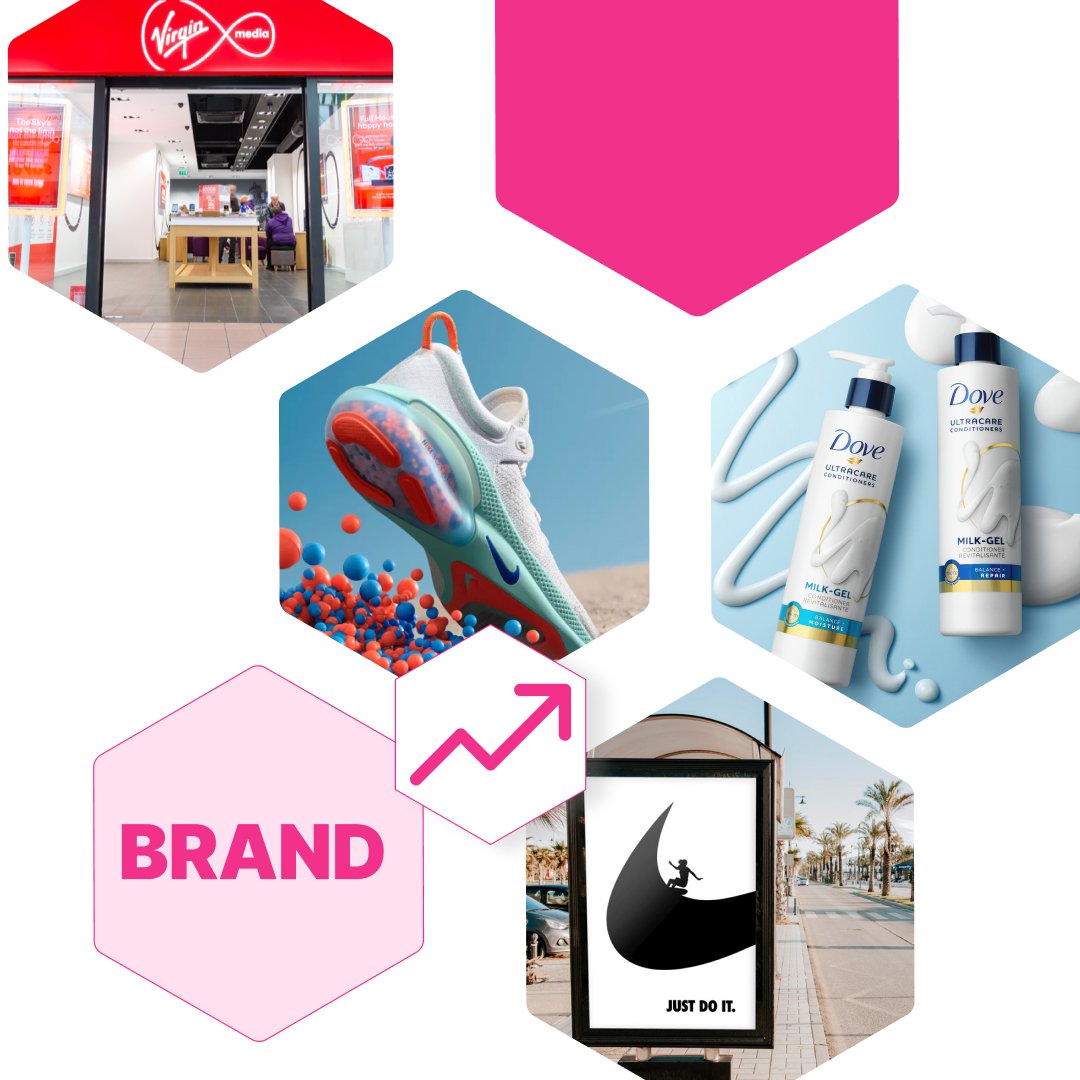The consumer packaged goods industry is in the middle of a seismic shift that's making traditional marketing playbooks obsolete. The global CPG market is projected to rise from $3.45 trillion in 2025 to $4.24 trillion by 2030, growing at a CAGR of 4.2%. But while the market continues expanding, the way brands reach consumers has become more complex.
The attention challenge alone tells the story. Research has thoroughly debunked the widely cited "8-second attention span" statistic, but real attention data tells an even more concerning story for marketers. University of California research shows that people's attention spans on screens have plummeted from 2.5 minutes in 2004 to just 47 seconds by 2021. And the trend continues accelerating. That's the actual time consumers spend focused on any single screen before switching to something else.
Meanwhile, the number of touchpoints where consumers encounter CPG brands has exploded. A decade ago, most CPG purchases involved maybe three or four brand interactions: an ad, some word-of-mouth, maybe a coupon, then the shelf decision.
Shoppers nowadays might discover a product through a TikTok video, research it on Amazon, check reviews on Reddit, compare prices across three different retailer apps, see a targeted Instagram ad, and finally make the purchase through a grocery delivery service. Each of these touchpoints demands different creative approaches, different messaging strategies, different optimization techniques.
The retail media explosion exemplifies the complexities involved. Amazon's advertising business generated $56 billion in revenue during 2024, while global retail media ad spending reached $129.4 billion, growing from less than $1 billion just a decade ago. U.S. advertisers alone will spend more than $62 billion on retail media by the end of 2025, representing a $10 billion year-over-year increase.
Performance varies wildly across these channels. Amazon controls roughly 75% of retail media ad revenue in the U.S., but a creative asset that drives strong conversion rates on Amazon might completely miss the mark on Instacart or Walmart Connect. Not because the product or message is wrong, but because consumer attention patterns and decision-making contexts differ between platforms.
Every CPG marketer is grappling with how to maintain brand consistency while optimizing for performance across radically different environments. The answer goes beyond having more creative variations or bigger budgets and requires an understanding, at a scientific level, of what captures human attention and drives purchase behavior in each specific context.
That's where predictive attention analytics come into play. Instead of launching creative and hoping for the best, CPG brands are now using AI-first tools to predict exactly how their assets will perform before spending a dollar on media.
They're getting scientific insights into which elements will capture attention, which will drive memory formation, and which will ultimately motivate purchase behavior. It's the difference between educated guessing and data-driven certainty in an industry where small improvements in creative performance can translate to enormous bottom-line impact.
CPG marketing fundamentals
Marketing in CPG is a balancing act. On one side, you’ve got quick-fire buying decisions. On the other, strict rules and scattered customer journeys. To build a strategy that works, you need to embrace both.
The brand building vs. performance balancing act
Research consistently shows that a 60:40 budget split favoring brand marketing delivers optimal results, but many CPG brands struggle under pressure for immediate returns. CPG marketing spending hit 19.5% of sales in 2024, up 1.7 percentage points since 2022. This reflects the mounting pressure from cost-conscious consumers, as well as aggressive retailers and expanding channel demands.
More and more brands are moving away from treating brand and performance marketing as separate. Instead, performance captures the demand created by brand, while brand helps performance work harder by building recognition and trust.
Modern shopper journey complexity
Google research shows that 75% of CPG shoppers use digital channels for inspiration, yet 80% of retail sales still happen in physical stores. What you get is a hybrid reality where digital discovery drives offline decisions in ways that make traditional attribution nearly impossible.
A typical journey might involve:
- Discovery on TikTok
- Website research
- Amazon reviews
- Price comparisons across apps
- Instagram ads
- An in-store purchase
Every touchpoint shapes the final decision, so marketing strategies need to create a consistent experience no matter where people come across your brand.
Regulatory complexity that matters
CPG marketing operates within strict regulatory frameworks where mistakes have consequences. FDA food recalls jumped 27.6% from Q4 to Q1, with undeclared allergens responsible for 38.1% of recalls. California's Food Safety Act will ban key additives affecting roughly 38,000 product formulas, while cosmetics face expanded FDA authority through MoCRA.
These constraints affect every marketing decision, from social content to packaging claims. The most effective brands build compliance into the creative process early on, so they can move faster and earn trust through transparency and accuracy.
Strategic pillars for 2025 and beyond
CPG brands making headway in 2025 often follow practical approaches that help them stay sharp in a changing market and get more from every part of their marketing.
Omnichannel consistency that actually works
Consistency across channels isn’t optional anymore. But that doesn’t mean everything should look the same. The best results come from adapting brand elements to fit each context while keeping a clear, recognizable identity.
The challenge lies in the execution. An Amazon A+ module optimized for conversion looks different from an Instagram story ad optimized for engagement, yet both need to reinforce the same value proposition. The brands getting this right use systematic creative testing that measures both attention capture and brand recognition across contexts.
Retail media mastery beyond Amazon
Amazon's advertising business hit $56 billion in 2024, growing 19.8% year-over-year, but everything has become that much more competitive. Walmart Connect grew 27% in the U.S., – faster than Amazon in percentage terms – to reach $4.4 billion in revenue, while Instacart ads provide an incremental sales lift of more than 15% for brand partners.
Each platform has unique dynamics. For instance, Amazon shoppers exhibit different attention patterns than Instacart browsers. Creative strategies must account for these nuances. Average CPCs varied dramatically, with Instacart and Walmart seeing efficient rates at $0.93 and $0.84 respectively.
Creative performance optimization through AI insights
Many CPG brands have turned to predictive attention analytics to understand how assets will perform before investing in production. Rather than testing after launch, brands are now using AI to refine creative concepts before anything goes live.
How does creative testing and AI stack up?

Graphic comparing traditional vs. AI-powered creative testing across a range of factors including timing and speed.
Dragonfly AI's patented biological algorithm predicts creative performance by analyzing attention, memory, emotion, comprehension, and persuasion factors. Brands using these insights report significantly higher conversion rates because they're making data-driven optimizations at the concept stage.
Data and measurement that drives decisions
Research indicates that creative assets in the top attention quartile tend to deliver markedly stronger business results. One industry report found that high‑attention impressions result in up to a 130% lift in conversion rates compared to low‑attention impressions, along with a 51% lower cost per action.
Learn more with our ultimate guide to conversion rate optimization (CRO)
The most advanced CPG brands focus on attention-driven KPIs that directly correlate with business results: attention score improvements, memory retention rates, and persuasion index scores that predict purchase intent more accurately than traditional metrics like click-through rates.
Emerging trends
Trends don’t always arrive with a headline. These ones are already in play and changing how CPG marketing gets done.
AI-powered creative at unprecedented scale
The global generative AI in CPG market is projected to explode from $1.2 billion in 2023 to $18.9 billion by 2033, growing at a 31.9% CAGR. Efficiency and creative possibilities that weren't feasible before are meeting in the middle to get the best results.
TikTok research shows that ads created using Symphony AI boost purchase intent by 37% and increase brand favorability by 38%, while a McKinsey 2024 survey found that 71% of CPG leaders have adopted AI in at least one business function. That’s up from 42% in 2023.
The breakthrough is predicting performance before creative ever reaches consumers. AI can be the perfect tool for maximizing digital advertising effectiveness, leading to a 5% to 15% brand revenue increase. Brands are using AI to handle optimization and variation creation while preserving human control over strategy and brand vision.
Sustainability messaging that actually converts
More brands are treating sustainability as part of how they do business, not just how they talk about it. Products marketed as sustainable held a 23.8% market share of the total US CPG market in 2024, up 2.6 percentage points from 2023. Sustainable products were responsible for 41% of the growth of the total US CPG market from 2013-2024.
The consumer appetite is real: 85% of consumers are experiencing climate change impacts firsthand, and consumers are willing to spend an average of 9.7% more on sustainably produced goods. However, 74.8% of consumers moved towards more sustainable choices over the past year, suggesting momentum is building.
The key is authentic execution. Nearly six out of 10 top-level executives admit to overstating their sustainability activities, which explains consumer skepticism. Brands winning with sustainability messaging integrate environmental benefits in a natural way that fits with their functional messaging rather than treating them as separate add-ons.
Social commerce beyond discovery
Social platforms are evolving from discovery channels to full commerce destinations. Almost half of consumers purchased products directly through social media in 2024, up from 21% in 2019, while 67% use social media to discover new brands and 70% seek reviews to validate companies before purchasing.
This creates new opportunities for CPG brands to shorten the purchase funnel by enabling direct purchases within social feeds. Success requires an understanding of platform-specific attention patterns and optimizing creative assets accordingly, as consumer behavior varies across TikTok, Instagram, and emerging platforms.
Zero-party data as competitive advantage
As third-party cookies disappear and privacy regulations tighten, CPG brands are investing heavily in zero-party data, the information consumers willingly share in exchange for personalized experiences. BCG found that personalized marketing can lead to a five-to-eight times return on investment for CPG companies when compared to blanket marketing campaigns.
Many brands are building sophisticated preference centers and personalized recommendation engines that capture detailed consumer insights while providing immediate value. The data is particularly helpful when combined with attention analytics to create hyper-personalized creative experiences.
Real-world examples and case studies
Modern CPG marketing comes down to how well things are actually put into practice. These examples show what that looks like when it works.
Partake Foods transforms marketplace performance
The allergy-friendly cookie company faced struggling ROAS across retail media platforms until it restructured campaigns for full-funnel marketing rather than just bottom-funnel conversions. Since implementing an always-on testing approach with coupon-specific campaigns and new ad formats, ROAS increased by 34%, click-through rates doubled year-over-year, and conversion rates improved by 3%.
CPG influencer campaign drives awareness
A major CPG brand targeting millennial moms used micro-influencer partnerships to launch organic snacks, focusing on authentic storytelling rather than promotional content. By working with influencers to develop genuine content about snacking and nutrition in busy family life, they increased awareness by 45% and trial by over 20% in just three months.
Retail media integration boosts in-store sales
A CPG brand partnered with Citrus Ads and Instacart to create integrated campaigns supporting new product launches that combined online advertising with offline data sharing. The holistic approach led to a 25% increase in in-store sales and boosted brand awareness by connecting digital discovery with physical purchase.
Step-by-step framework to build a CPG marketing plan

A good CPG marketing plan needs more than scattered tactics. It works when there’s structure behind it. Here’s one way to build a plan that works,
1. Audience and category audit
Start with a clear picture of who you're trying to reach and the landscape you're operating in. That means digging into current trends, shifts in consumer behavior, and the context shaping what people want. Go deeper than age and income and look at how people shop, as well as what influences their decisions and the emotional cues that matter to them.
Run a comprehensive competitor analysis to understand how your category currently operates. What messaging themes are oversaturated? Where are the gaps in positioning? Understanding consumer behavior and preferences through surveys, focus groups, social media analysis, and real-time feedback helps inform marketing decisions. You want to find the white space where your brand can own a unique position rather than fighting for share in crowded messaging territories.
2. Channel prioritization
Not all channels are created equal for your specific brand and category. Marketing strategies work best when they're built around concrete goals using the SMART framework: Specific, Measurable, Achievable, Relevant, and Time-bound. Evaluate each potential channel based on where your audience shops and the competitive intensity. Be realistic in your ability to win attention.
See how heatmaps can help predict attention
Consider the entire customer journey rather than final purchase points. Your audience might discover products on TikTok, research on Amazon, but ultimately buy in-store. Your channel strategy needs to account for these complex, multi-touchpoint paths and so there’s consistent messaging across each interaction.
3. Creative concepting and AI pre-testing
This is where Dragonfly AI becomes so invaluable. Instead of developing creative concepts and hoping they'll work, use predictive attention analytics to understand exactly how your assets will perform before investing in production. Test multiple concepts against attention benchmarks, analyzing not just what captures the eye but what drives memory retention and purchase intent.
Test concepts and content early in the development process, not just final executions. Taking this approach lets you iterate on ideas while they're still flexible rather than making expensive changes to finished campaigns. Smart brands use these insights to optimize everything from package design hierarchy to social media ad layouts.
4. Media mix and retail media alignment
There's been a sharp increase in CPG advertising spend on retail media advertising as more companies rely on retail media networks. Your media strategy needs to balance brand building with performance activation, typically following the proven 60:40 split in favor of brand investment.
Integration is central here. Your retail media campaigns should reinforce the same brand messages as your upper-funnel awareness efforts. Use retail media's precise targeting capabilities to reach consumers when they're closest to purchase, but make sure the creative and messaging connect back to your broader brand narrative.
5. Always-on optimization and benchmarking
Companies that see results usually start with a clear measurement framework. They run regular reviews to understand what worked, what didn’t, and how to apply those lessons across other channels and markets.
Set up systems for continuous testing and optimization rather than waiting for campaign post-mortems. Use attention metrics as leading indicators of performance, adjusting creative elements in real-time based on data rather than intuition. The brands winning long-term treat marketing as an always-on optimization engine rather than a series of discrete campaigns.
Find out more about ad testing
Toolkit and resources
Theory is great, but execution is everything. Here are the tools and resources to turn these insights into action for your CPG marketing campaigns.
Essential CPG marketing checklist
Pre-launch fundamentals:
- Audience personas backed by behavioral data, not just demographics
- Competitive messaging audit identifying white space opportunities
- Creative concepts tested with predictive attention analytics
- Channel strategy prioritized by audience behavior, not just reach
- Cross-channel message consistency validated across touchpoints
Campaign optimization:
- Attention benchmarks established for your category and contexts
- Real-time performance monitoring beyond vanity metrics
- Creative variation testing across platforms and placements
- Retail media integration aligned with broader brand messaging
- Attribution modeling that accounts for complex customer journeys
Performance measurement:
- Leading indicators (attention scores) tracked alongside lagging indicators (sales)
- Continuous optimization protocols established, not just post-campaign reviews
- Competitive benchmarking updated quarterly to identify shifts
- Brand health metrics monitored to balance performance with equity building
Dragonfly AI resources
Getting started with predictive attention analytics doesn't require a complete overhaul of your creative process. Dragonfly AI integrates with existing workflows to provide scientific insights into what actually captures consumer attention.
Explore more insights for CPG brands, or book a demo to see how attention prediction works with your specific creative assets and category benchmarks. The platform covers everything from packaging design to social media creative, giving you data-driven confidence before campaigns launch.
External research worth following
Industry benchmarks from Nielsen, Kantar, and Mintel provide essential context for strategic planning. eMarketer's retail media reports help inform channel investment decisions, while Think with Google offers consumer behavior insights across CPG categories.
You still want to see how your creative actually performs in the wild. That’s where attention analytics come in, helping you respond to how people really engage with your brand.
The future belongs to the data-driven
CPG marketing has moved beyond gut feelings and focus groups. The brands winning today use predictive attention analytics to understand what captures consumer attention before campaigns launch.
Ready to see the science behind creative performance? Book a Dragonfly AI demo and discover how attention prediction transforms CPG marketing results.




